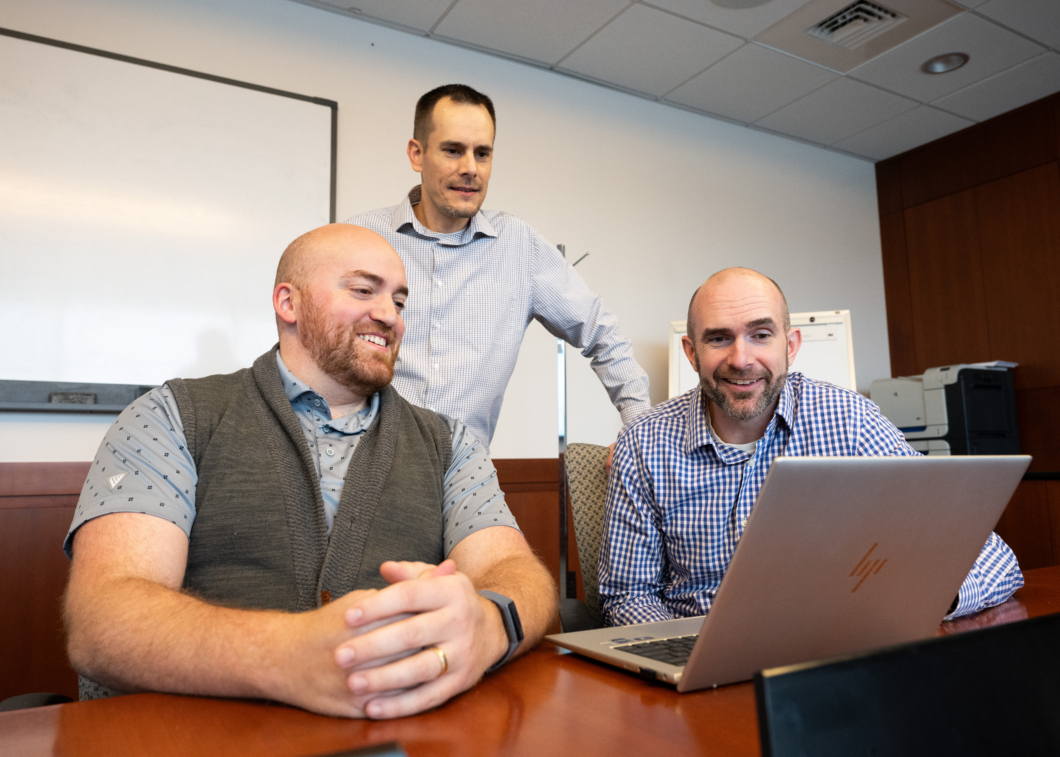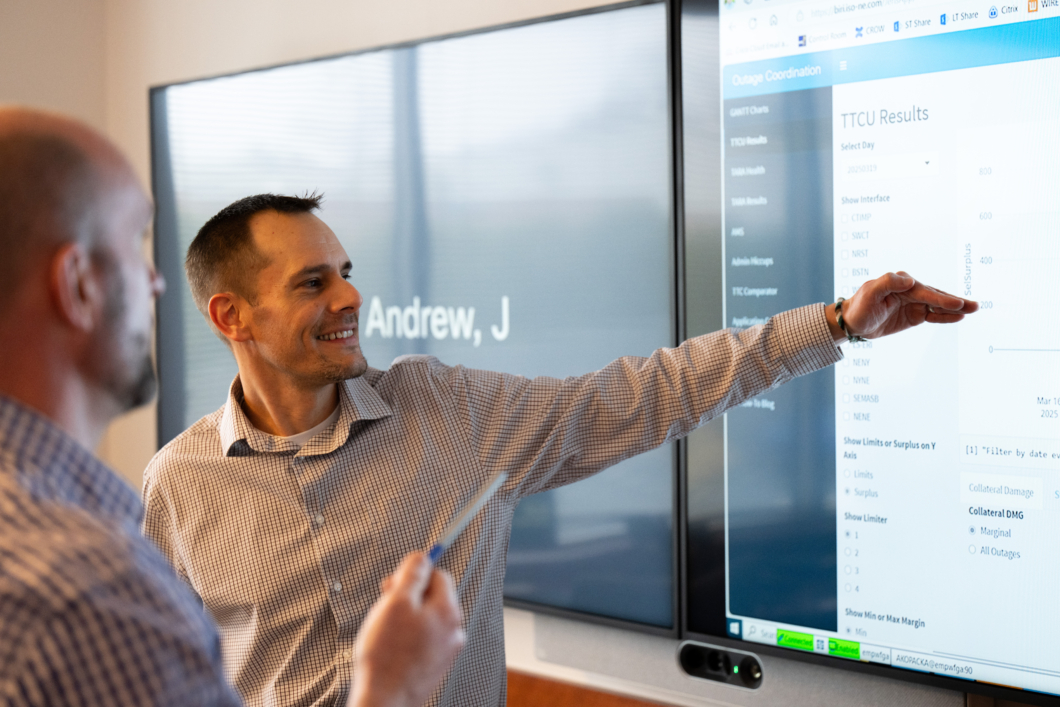Scheduling reliability, one generator at a time

Routine maintenance is a part of everyday life. Oil changes for our cars, cleanings for our teeth, and yearly physicals for our bodies.
It’s no different for the 400 or so generators supplying power to New England’s bulk electric system, all of which require various degrees of maintenance and testing over the course of a year.
Ensuring this maintenance can happen without threatening grid reliability falls to ISO New England’s Resource Outage Coordination team, which handles and schedules around 6,500 outage requests from the region’s generators every year. Requests from generators to go out of service for things like maintenance, testing, and refueling can be for the next day or up to two years in the future, and can last anywhere from one to five weeks, depending on the work being performed.
The team works closely with the ISO’s Transmission Outage Coordination team to make sure planned generation and transmission outages are completed while minimizing impacts to reliability and the region’s wholesale electricity markets.
“Those things have to work together,” said Andrew Kopacka, manager, Resource Outage Coordination. “If transmission line A wants to go out of service, and generator B wants to go out of service, it all has to work together. That’s for every one of those 400 generators, as well as every piece of transmission equipment we have on the system. Lines, breakers, transformers, you name it.”
The Resource Outage Coordination team was created in late 2024 as part of a reorganization of how the ISO studies outage requests. As the region’s grid transitions from one dominated by large generators to one that includes smaller generation and storage systems, it made sense to have a dedicated team focused on the resource outages as a whole.

Resource outage requests are climbing around 3% per year with no end in sight, driving innovations in how the ISO handles them.
“We came up with a series of tools and ways to do business,” said Jens Michaelsen, lead transmission adequacy and reliability assessment analyst. “Over the past couple years, we’ve improved our efficiency in studying the massive number of applications by using a new program that we developed at the ISO.”
The program, called Total Transfer Capability Utility, or TTCU, was created at the ISO with the help of the organization’s Advanced Technology Solutions group. It enables the Resource Outage Coordination team to analyze scheduled transmission outages in relation to resource outage requests. From there, they can run various scenarios through the software to determine, and avoid, potential impacts on the system before selecting the best course of action.
The innovation and collaboration behind TTCU are paying off. Team members said the program is already a “game changer” that is helping them schedule the ever-increasing number of requests they receive.
Kopacka and Michaelsen, who have almost 30 years of industry experience between them, came to the ISO as control room operators after serving in the US Navy. They both joined the outage coordination group in 2018 and have been able to apply their time in the control room to their new roles every day.
“I think it’s been really good to have the experience that we’ve had so far, because we can see what we’d be worried about in an operating day and do our best to prevent that from happening to today’s operators,” said Michaelsen. “It’s been a cool experience to come from the control room, working with Andy, see the need for these things, and then be set free to go do it. The ISO has been really supportive of that.”

Connor Corsi, senior resource analyst on the team, came to the ISO almost six years ago after working as a plant operator in the US Merchant Marine. His experience allows him to understand the needs of the generators when trying to schedule their outages. The ability to have a conversation with the generators is something he takes pride in.
“I’d say my favorite part of the job would be interacting with the resource operators,” said Corsi. “It’s always good to help them out, meet with them, and help them discuss their needs.”
In addition to scheduling thousands of planned outages and building relationships, the team takes on several collateral duties. Nick Miner, the team’s newest member and a US Navy veteran, chairs the System Restoration Working Group, which is responsible for maintaining the plans that would be implemented if the regional grid were to suffer a blackout. They also produce reliability studies for monthly and annual auctions, act as the ISO’s liaisons with nuclear generators, and help the ISO respond to unplanned outages.
The volume of work they handle is intensive, growing, and constantly changing as the resource fleet continues to evolve in New England. For Kopacka, this is his favorite part of the job.
“Every day is something different,” he said. “It literally is different every day. It may be a different fire to put out, or it may be the outage we looked at yesterday is 180 degrees different than the outage we’re looking at today, even if they’re for the same exact unit. It keeps you on your toes and keeps it productive. There is no boredom.”
- Categories
- Features & Interviews
- Tags
- system operations
